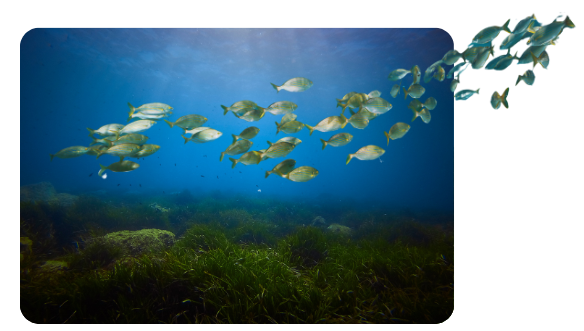Story
Improved access to the longest marine time series in the world
22 September 2023
It’s now easier than ever to utilise data from the Western Channel Observatory (WCO) – an open-access time series that began in the Western English Channel over 100 years ago.

Plymouth Marine Laboratory today unveils the new Western Channel Observatory website, with improved accessibility to the unique and vast spectrum of data collected in the Western English Channel.
Access the new Western Channel Observatory website here >>
The near-continuous time series – which has underpinned decades of critical ocean and climate research – collects benthic, pelagic, atmospheric and satellite data – a truly interdisciplinary operation, drawing in expertise from ecologists, biologists, chemists, physicists, ecosystem modellers and Earth observation scientists.
Data is collected through various means, including:
-
In-situ pelagic and benthic sampling: Including weekly in-situ sampling at the L4 coastal sampling station (measurements since 1988 at 50° 15’N; 4° 13’W). Fortnightly in-situ sampling at the open shelf sampling station E1 (measurements since 1903 at 50° 02’N; 4° 23’W). Monthly in-situ sampling at the L4 coastal sampling station (Measurements since 2008 undertaken at a variety of sites within the Plymouth Sound but currently focuses on the marine biodiversity reference site – station L4 at 50° 15’N; 4° 13’W).
-
Autonomous moorings: PML operates two state-of-the-art data buoys, which send near-real time data back to the laboratory on a range of environmental conditions, including sea surface temperature, salinity, oxygen, turbidity, air temperature, humidity, windspeed, wind direction, atmospheric pressure, coloured dissolved organic matter (CDOM) fluorescence, nitrate and light.
-
Penlee Atmospheric Observatory: In addition to the in-water sampling described above, there is an atmospheric chemistry observatory located at the mouth of Plymouth Sound, which monitors present gases such as carbon dioxide, sulphur dioxide, ozone, and methane. The land-based observatory is in close proximity to the WCO marine sampling stations, enabling better understanding of the ocean-atmosphere gas exchanges.
-
Satellite data: PML operationally processes satellite derived fields of sea-surface temperature and ocean colour, which can be used to derive chlorophyll. These data allow the point measurements at L4 and E1 to be set in a wider context.
-
Ecosystem modelling data: The Western English Channel is a useful test area for developing ecosystem models. Data from the WCO are used to develop, parameterise and validate models and ideas.
Above: Data collection sites in the Western Channel Observatory
Professor Tim Smyth, lead scientist of the Western Channel Observatory, said: “We’re delighted to unveil our new website, which has been designed to improve accessibility to the vast data made available from the Western Channel Observatory time series. We are proud to manage such an important resource, not only for marine scientists locally but for environmental scientists across the globe.”
“The data and knowledge generated at the WCO allows us to better understand the causes and consequences of some of the largest environmental issues we are currently facing, such as climate change, ocean acidification, biodiversity loss and pollution. This is achieved by measuring the key environmental and biological variables that are crucial to the functioning of marine ecosystems. These variables include: light, temperature, salinity, oxygen, organic and inorganic carbon, organic nutrients, biodiversity – from microbes to plankton and seabed macrofauna, and atmospheric gases.”
“The area of the WCO is one of the most studied bodies of water in the world. This has enabled an extensive understanding to be built on the functions and processes of the western English Channel’s dynamics, as well as providing an unrivaled case study reference site for international research.”
“There are multiple reasons why the WCO is unique and so valuable, including: the longevity of the dataset; the breath of science across domains; the inclusion of key ecosystem variables at all levels of the marine food web, and clear seasonal differences between the well-mixed autumn/winter water column and the more stable, layered spring/summer water. But it doesn’t stop there. The data is then fed into ecosystem models and satellite algorithms as well as being used for validation and calibration of monitoring technologies. This end-to-end analysis enables us to understand the physical, chemical and biological processes in the ocean, whilst identifying long-term trends and predicting future changes.”
The Western Channel Observatory is hosted at Plymouth Marine Laboratory, in partnership with the Marine Biological Association, and funded by the Natural Environment Research Council.
Related information
Western Channel Observatory (WCO)
Celebrating the Western Channel Observatory on World Ocean Day
Time-series: a collection of data points that are recorded in chronological order over a period of time. These data points are usually taken at regular intervals, such as seconds, minutes, hours, days, weeks, or years. Time-series data can be used to analyse and understand trends, patterns and relationships in data over time. It can also provide insights into how different variables change over time and how they may be related to each other.
